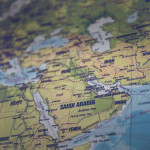ISIS has Developed Massive Digital Capability – not the JV Team Anymore
The mini-blogging platform Tumblr is a repository for anyone to upload their pop culture fancy. It is also a place where one can find detailed instruction on how to aid ISIS.
Often many months pass before Tumblr becomes aware of an ISIS account and suspends the user. Recently a Tumblr account posting extensive information on how to fund ISIS or host a fighter in one’s home remained active for months before being taken down—despite the fact that they were notified by another user twice.
The problem is not limited to Tumblr. ISIS recruits individuals via Twitter, Snapchat, Facebook, Vine, YouTube, Reddit and others. Most of these social networks are slow to remove content that promotes violence and extremist ideology primarily due to a lengthy and complex review process the law requires to avoid censorship.
An official ISIS app was available on Google Play for three months before being removed. The app, named The Dawn of Glad Tidings, connected personal Twitter accounts of ISIS supporters directly to ISIS’s communications department, which allowed users to post automated propaganda Tweets, hashtags and images created by ISIS. The app was so sophisticated, it timed and spaced the tweets in a manner that evaded Twitter’s spam detection algorithm. At its height, the app facilitated over 40,000 tweets in a single day.
For decades, research has indicated that a potential terrorist takes several years to go through the traditional stages of radicalization and required physical contact with recruiters before committing acts of terror. But according to a new report from the International Center for Counter-Terrorism (ICCT) in The Hague, radicalization via the Internet has become an effective tool in speeding the process.
In a time when lone wolf terrorist attacks are perpetrated by individuals who radicalize themselves via the Internet, many believe the social networks should do more to prevent the dissemination of extremist content.
Twitter is another platform where ISIS continues to demonstrate their technical abilities and communication skills. Studies estimate there are more than 90,000 Twitter accounts operated by ISIS. Many of these accounts perform specific functions: some are dedicated to generating content, some focus on retweeting material, and others serve to promote the new accounts of suspended users. (Currently there are no effective measures that prevent suspended users from creating new accounts.)
“Ive seen ISIS accounts with 15,000 followers taken down 17 times. In two to three days the account is back with 15,000 followers,” said Matthew Costa, who works in solar energy, but looks for ISIS accounts in his free time. Costa is known as a flagger. Since the summer of 2015 he has flagged and reported thousands of ISIS accounts.
The Counter Extremism Project (CEP), a nonprofit dedicated to combating extremist groups, petitioned Twitter to adopt policies that would make it difficult for suspended extremists to create new accounts. When an ISIS account recently celebrated its 100th return to Twitter, CEP followed with their own Tweet directed at the site, “When extremists are celebrating their 100th account, your approach isn’t working.”
But some intelligence analysts are not terribly concerned about the terrorist organization’s access to digital platforms. By having so many ISIS accounts on major social networks, intelligence agencies have many surveillance opportunities (should they choose to use them—unlike DHS). Erin Saltman, a senior researcher for the Institute for Strategic Dialogue out of London says, “It would be worse if these radical conversations move to smaller, unregulated platforms that are hosted in foreign countries.”
ISIS seems to be winning both a digital war as well as a war of ideas. There is certainly no competition to the extremist messages which are fast-paced and offered across a variety of platforms. Farah Pandith, former special representative to Muslim Communities for the State Department, says there is a dire need for more authentic and diverse counter-narratives that can plant seeds of doubt in the young minds of those considering extremist ideology.
The difficulty with counter-narratives is that they cannot come from Western governments. And because they are not coming from within the Muslim communities themselves, there is a vacuum.
Until the moderate leaders in Muslim communities condemn the actions and ideology of the extremists in their schools, mosques and on social media platforms, the war of ideas will be lost on a new generation.




